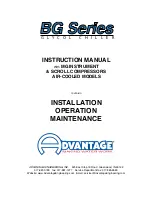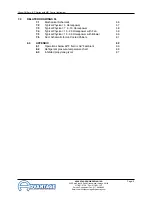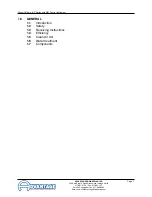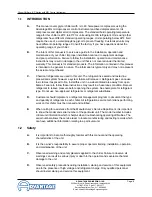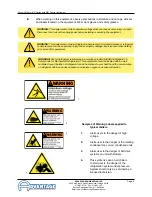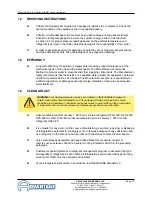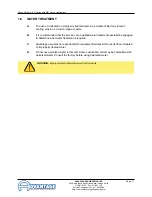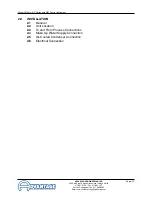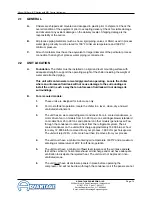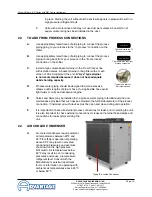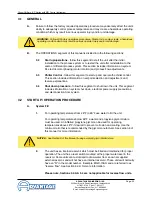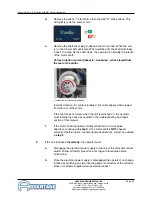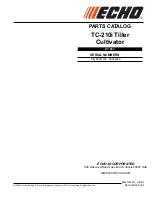
Glycol Chillers : BC Series with MG Control Instrument
Page: 14
ADVANTAGE ENGINEERING, INC.
525 East Stop 18 Road Greenwood, Indiana 46142
317-887-0729 Fax: 317-881-1277
Service Department Fax: 317-885-8683
Email: [email protected]
2.1 GENERAL
A.
Chillers are shipped skid mounted and wrapped in plastic prior to shipment. Check the
overall condition of the equipment prior to accepting delivery. Check for visible damage
and document any evident damage on the delivery receipt. Shipping damage is the
responsibility of the carrier.
B.
All process piping materials (such as hose, rigid piping, valves or filters) used in process
water piping circuitry must be rated for 100°F minimum temperature and 100 PSI
minimum pressure.
C.
All such materials must have the equivalent or larger diameter of the particular process
connection that length of process water piping is connected to.
2.2 UNIT LOCATION
A.
Foundation. The chiller must be installed on a rigid and level mounting surface with
adequate strength to support the operating weight of the chiller including the weight of
water and attached piping.
This unit will contain water or water/glycol when operating. Locate the chiller
where an unforeseen fluid leak will not cause damage to the surroundings or
install the unit in such a way that an unforeseen fluid leak will not damage its
surroundings.
B.
For air-cooled models:
1.
These units are designed for indoor use only.
2.
For most efficient operation, locate the chiller in a level, clean, dry and well
ventilated environment.
3.
The unit has an air-cooled refrigerant condenser. For air- cooled condensers, a
motor driven fan (on models from 5 to 20 tons) or a centrifugal blower (standard
on models from 25 to 30 tons and optional on other models) generates air flow
through the condenser to remove heat from the refrigerant system. The air
cooled condenser on the unit will discharge approximately 15,000 btu per hour
for every 12,000 btu/hr removed from your process. 1,000 cfm per horsepower.
The unit will reject 25% - 35% more heat than it removes from your process.
4.
The unit must have a minimum entering air temperature of 60°F and a maximum
entering air temperature of 95°F for efficient operation.
5.
The unit must have a minimum of four feet clearance at the air intake and six
feet at the vertical or horizontal exhaust air discharge and must have adequate
ventilation to dissipate the rejected heat. The unit must not be placed in non-
ventilated areas.
6.
The unit must have all enclosure panels in place before operating the
compressor. Air will not be drawn through the condenser coil if the panels are not



